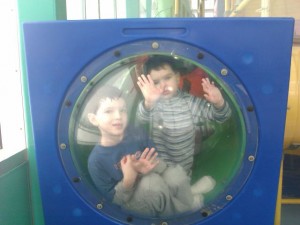First, I’m not a doctor nor an expert, so if you want a detailed technical explanation, I suggest you talk to the doctors that diagnosed you or your children. However, if you would like my take on it and details as to what my son does and why, then please feel free to read on.
A recent discussion on Twitter about visual stimming really got a lot of people thinking and some people asked what it is. It’s a bit of a vague question for many reasons, for example, some people have witnessed it but don’t know why it happens, some people have never witnessed it and some people have witnessed it yet didn’t even realize that what they saw was actual stimming.
While there is no concrete definitive answer just like how there are no two people with Autism exactly the same, it can be broken down into a few distinct categories. And much like a newborn baby’s cries, it’s up to you to distinguish what each stimming event means.
In most cases, stimming comes as a form of meditation for the person, a way to narrow their focus down onto one thing so as to remove themselves from an overwhelming situation. In Cameron’s case, sometimes he has a friend come over to play and finds that every hour or so, he needs to remove himself to the kitchen where he’ll pass two toys back and forth in front of his face over and over and over again for a good 10 to 20 minutes. This eases his mind, allows him to wash away the anxiety and stress of being overwhelmed and then go back to join his friend and play some more.
Another example of this is in Temple Grandin’s movie where she invents a squeeze machine which holds her as tight as she wishes to be held and it calms her, focuses her and even prepares her for what she knows will be an overwhelming day.
Some people fear this stimming, they wish their child wouldn’t do it and so they try to make their child stop or they look for a cure. In these cases, I think the stimming is a cure (at least in the Autistic’s mind) to an overwhelming world. It’s their escape and so taking that away from them could be rather disastrous.
Some people believe that what a child with Autism might be seeing or tasting or hearing could be an after effect of the food they eat. Sounds strange but the premise of the GFCF diet is that the proteins affect the brain much like a powerful drug, which in turn makes it so that when they see an object pass before their eyes, it looks as if it’s leaving trails behind it. Or sounds echo more than before, or touching something can be almost painful. Most of us haven’t done heavy drugs like that but I’m sure we’ve all heard stories or seen enough movies to imagine what it could be like. If those gluten or casein proteins truly do react like that then it’s easy to see how and why an Autistic child would stand there waving their hands back and forth in front of their face for an hour.
In some cases stimming is sometimes not stimming at all! For some children, they may have visual impairments that no one but trained experts would recognize and the issues that it gives these children end up looking to us like stimming. If one eye is out of alignment, if the vision is clear but causes things to be jumbled, if the vision to brain link is not 100% causing the child to be unable to track a moving object without moving their head…. these things can result in a child doing repetitive motions over and over again trying to self correct a problem they don’t even realize they have and to us, and even most doctors, it would simply look like an Autism symptom. In these cases, a visit to the proper doctor that can recognize and treat these things could be all that’s required for a full recovery! Shocking, I know.
Take schizophrenia for example, where a child is imagining things as if they’re real, where they’re hearing voices talking to them as if they’re real… these children may do what the voices ask, they may refuse and end up hitting themselves trying to make the voices stop… again, results of what they don’t understand end up being diagnosed as Autism to us. If there is enough going on in the child’s mind, they may not even notice the real world… which may come across as ignoring, or violent, or again… stimming.
This brings us to the ‘violent’ stimming, which is often seen as children banging their head against the wall or hitting themselves in the head… but can sometimes be something more simple such as bouncing on their beds, hitting a toy over and over or even, as mentioned, a strong comforting hug from a blanket or device (almost never from a person). Most people think of it as a psychotic crazy thing, one of those things you only ever see in horror/thriller movies where the kid will eventually start ripping animals apart and family members go missing… but the truth of the matter is, this is just stimming.
There’s a lot of debate over this, whether it’s frustration of being locked in their own little world, or if it’s their need to simply feel something. It could even be that on their level of sensory input, it has the same effect as a visual stimmer having an object pass before their eyes repeatedly.
These are the more extreme cases that tend to come from internal factors such as Autism, sensory issues or other things like that but you have to realize that there doesn’t have to be something like that under the surface for stimming to occur. Have you ever chewed your pen or pencil? How about your nails? Ever tapped your fingers on a table or bounced your knee up and down? Ever rocked back and forth in a rocking chair? Yeah, you know where I’m going with this. These are all forms of stimming that you and I do every day and as you know, half the time, we don’t even realize we’re doing it.
Cameron, luckily, is a visual stimmer mostly, in fact I have even an article written on his “thai chi” but he also does like the “banging” stimulation where he needs a heavy comforter to sleep, and likes to have his mattress on the floor… with him under it.
I think it’s really important that doctors figure out the differences and the causes. I don’t care if there are 1000 different causes, they need to be determined and a solution needs to be found where we, the parents, can differentiate between them.
Quite frankly, I’m happy that my child takes a 20 minute breather from social play to ease his mind. If that’s what it takes for him to be happy, have fun and have friends, then by all means, take your time! But if my child is hitting his little brother because it’s a voice in his head telling him to do it instead of just an Autistic need to fulfil a sensory input… I would kinda like to know!
The big deal about this is that doctors can only help us so much, and that’s usually after we, the parents, are able to break through the shell and figure things out ourselves. No one will ever know if a child hears voices unless we are able to get our child to respond to us and not just respond, but actually vocalize the issues.
And this is why stimming is still such a mystery. It comes in so many forms, most don’t even know they’re doing it and the reasons change with the seasons.
 As we talk about Santa and what each of us is hoping for, I lean over to my son Cameron and say “Do you know how I always know when you’re happy?”
As we talk about Santa and what each of us is hoping for, I lean over to my son Cameron and say “Do you know how I always know when you’re happy?”









